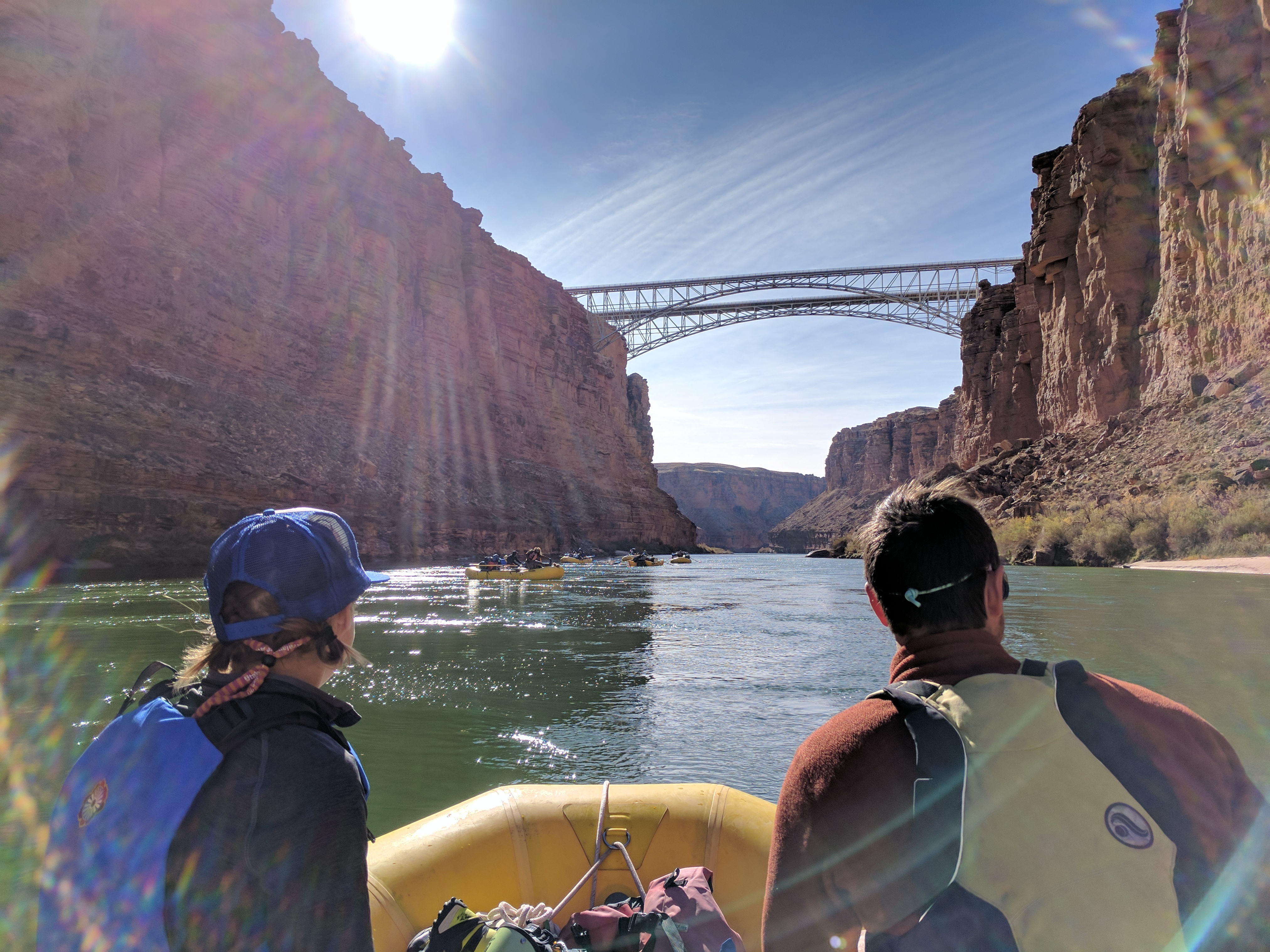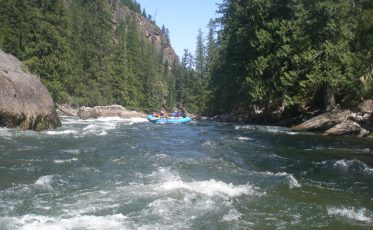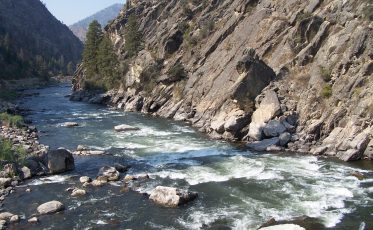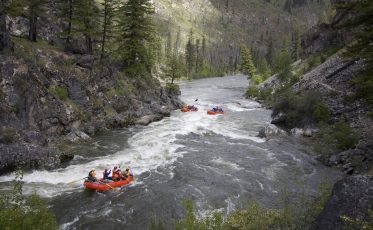Rafting the Grand Canyon – Permit Lottery Explained
Grand Canyon Permit Process – Noncommercial Trips
The current procedure for obtaining a much-coveted noncommercial permit to raft the Grand Canyon is in the form of a weighted lottery. This system began in 2006, when the previous “wait-list” system became an impractical method for hopeful rafters. The first-come, first-serve waiting list had grown to over 8,000 people, and an unlucky few could expect to wait nearly 20 years to go on the trip of a lifetime. The weighted lottery, while not perfect, introduced a randomized and arguably more reasonable way to land a noncommercial permit.
A noncommercial river trip is by definition a self-guided trip; it is not legal to hire a guide on a noncommercial trip. If this doesn’t sound like your cup of tea, the commercial season starts April 1st and ends September 15th, and there are 16 independent river guiding companies with dozens of different trip configuration options.
The noncommercial permit lottery is open for about three weeks in February, and those wishing to run a trip may submit one lottery application per person. You are required to create a profile on the Grand Canyon National Park website, where aside from personal information, you must list your previous history on any recreational Grand Canyon rafting trips.
NPS Grand Canyon River Permits Website
Once you create your profile, you will be able to access the lottery section of the site. The lottery process begins by deciding whether or not the trip will be the standard size, up to 16 people, or small size, up to 8 people. The next step is to make five choices for desired launch dates, in order of preference (Note that additional launch dates will improve chances of a successful lottery pick). Once you select the size of the trip and dates, you can assign a Potential Alternate Trip Leader (PATL), though note that this is the ONLY time one can be assigned. The username of the PATL must be known and entered at this point (You will receive a reminder prompt about assigning a PATL before proceeding). The PATL cannot be someone else applying for permits. If you win and you entered the lottery as both a Trip Leader and PATL, your permit will be revoked.
Once this information is complete, you will be directed to pay a $25 nonrefundable application fee. Once you pay the fee, your name is in the hat!
If successful, you will receive an email from the NPS informing you that you have successfully been awarded a permit for a noncommercial Grand Canyon trip. A non-refundable deposit of $400 (for standard sized, $200 for small sized trips) is due immediately.
 Passing under the Twin Bridges at the start of the trip. Photo: Josiah Failing
Passing under the Twin Bridges at the start of the trip. Photo: Josiah Failing
Odds/Chances:
Every lottery applicant is allocated a weighted number depending on both how many times they have attended a Grand Canyon trip, and how many years they have waited (and applied) to receive a permit. The maximum available number of points is five, which means that person’s name is entered five times into the lottery.
If someone has gone on a trip within the previous five years, then their point value is the number of years since that trip. For example, if John has never rafted the Grand Canyon, he has five points, whereas if Marci rafted the canyon two years ago, she has two points. If Dave rafted the canyon six years ago,and has applied every year since (unsuccessfully), he now has five points, increasing his overall chances of winning a permit.
Choosing optimal launch dates is the only variable you can control to boost your chances of pulling a permit. Off season and winter months are less popular and see much less demand for dates. Summer dates are significantly more popular, and odds are generally in the low single digits. The shoulder seasons – March – April & September – October – fall somewhere in the middle.
Other important info + tips/tricks:
The permit holder/trip leader MUST be present during the entire trip, with a penalty of citation and future use restrictions. If you think you might not be able to 100% commit to these requirements, you may assign a Potential Alternate Trip Leader (PATL). The PATL can resume responsibility as permit holder in place of the primary trip leader in case of unforeseen work/life obstacles or complications.
Applicants do not necessarily need to be an experienced raft guide to submit a lottery application. At least one member of each trip must have working knowledge of whitewater safety, first aid, and river equipment, as well as experience rafting on a list of comparable rivers to the Colorado.
Finding and establishing a group of 10-16 river trippers to apply will significantly improve your odds. Spread out over a few strategic launch dates and you might get to raft the Grand every year.
The Grand is a huge time commitment – some spend up to 25 days in the canyon – so cancellations are fairly common. The NPS will notify you via email for follow-up lotteries.
GC Statistics Breakdown
Super secret winter trip lowdown – applying for winter trips gives you the statistically highest chance to obtain a permit. But there’s more: if you’ve found a permit posse, make sure that everyone chooses a different day because certain days during the winter months have ZERO applications. Yes, zero applications, meaning regardless of points, you will pull a permit. It’s a somewhat random occurrence, so the best chance to cover the spread is to stagger your launch dates.
More on what we found:
The biggest takeaway is that you lottery odds depend on your selected launch date. Launches in the spring, summer, and fall are the most coveted and see significantly higher competition. The winter months – November, December, January, February – see considerably fewer applications, likely due to the colder weather. But don’t let that deter you; any trip through the Grand Canyon is still a trip through the Grand Canyon. And with a 25-day limit, you can maximize the magic.
Looking at all the data from 2015 applications, there are several visible trends:
- There is a single standard-size launch available every day from November to February
- March has two standard-size launch days available for every calendar day
- From April to October, there is roughly one standard-size trip available per day, and one small-sized available every other day. This brings the total available permits to around 46 for these months.
- Averaging the monthly data from 2015, we compiled this table that shows the number of applications received for that month, the number of launches taken, and the percent chance to obtain a permit for that particular month:
| Month | # Launches | # Applications/Mo | %Chance |
|---|---|---|---|
| January | 28 | 104 | 26.92% |
| February | 28 | 333 | 8.41% |
| March | 60 | 1352 | 4.44% |
| April | 46 | 2634 | 1.75% |
| May | 46 | 2753 | 1.67% |
| June | 44 | 3128 | 1.41% |
| July | 46 | 1743 | 2.64% |
| August | 46 | 1416 | 3.25% |
| September | 46 | 3958 | 1.16% |
| October | 45 | 2639 | 1.71% |
| November | 29 | 392 | 7.40% |
| December | 28 | 101 | 27.72% |
- September and June were the most popular months for applications, while January and December were the least popular.
- We also compiled an interactive graph that illustrates the chance of winning:
The lower graph displays the available launch dates for each month of 2015. The graph above displays the number of applicants per month (graded green bars), versus the percent chance of obtaining a permit for that month (yellow shaded curve).
—
A noncommercial river trip through the Grand Canyon is the most coveted rafting opportunity in North America. Though a bit frustrating at times, the lottery, permit process, and regulation keeps crowds at a tolerable level and maintains the fragile environment along the Colorado River for generations to come. We all deserve to experience the birthright of our public lands in pristine condition.
TL;DR
Landing a permit for the Grand Canyon is hard. Get all your friends to apply in December or January; embrace the cold.



